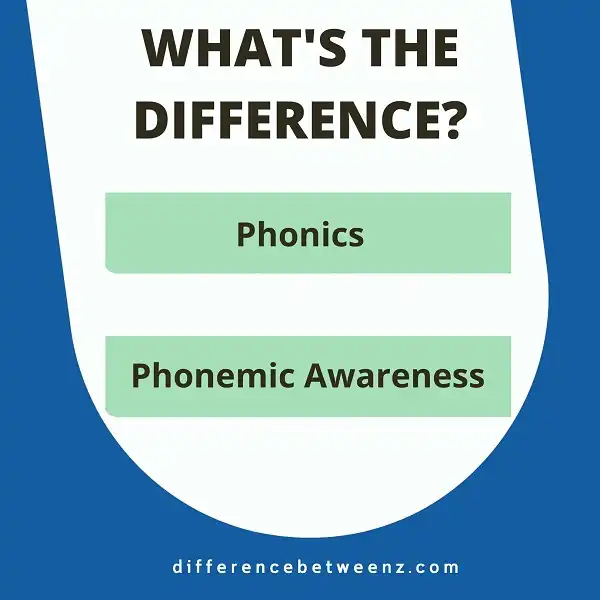Phonics and phonemic awareness are two different methods of teaching reading. Phonics focuses on teaching children the specific letter sounds that correspond to each letter in the alphabet. Phonemic awareness, on the other hand, is a method of teaching children how to identify and manipulate the individual sounds that makeup words. In most cases, phonemic awareness is taught before phonics. Though both methods are effective at teaching reading, they each have their own advantages and disadvantages.
What is Phonics?
Phonics is a method of teaching reading that emphasizes the connection between the sounds of spoken language and the spelling patterns of written language. Phonics instruction helps children learn the relationship between letters and sounds and how to use this knowledge to read words. Phonics is typically taught in the primary grades, with the goal of helping children develop the skills they need to read fluently and with comprehension. There are a variety of phonics programs available, and teachers may use different approaches depending on the needs of their students.
However, all phonics programs share a common goal: to help children build the foundation they need to become successful readers. Phonics instruction is just one part of a comprehensive reading program. It should be used in conjunction with other instructional strategies, such as teaching sight words and encouraging reading aloud. When used together, these strategies can help children develop into strong readers.
What is Phonemic Awareness?
Phonemic awareness is the ability to hear, identify, and manipulate individual sounds-phonemes-in spoken words. Phonemic awareness is a critical first step in learning to read because it helps children understand that spoken language is made up of smaller units of sound. Once they develop phonemic awareness, children can then begin to map the sounds they hear onto the letters of the alphabet, which is essential for learning to read. While phonemic awareness is important for all children, it is especially critical for those who are at risk for reading difficulties, such as English Language Learners and children from low-income households. Fortunately, there are a number of effective phonemic awareness interventions that can help struggling readers catch up to their peers.
Difference between Phonics and Phonemic Awareness
Phonics and Phonemic Awareness are two terms that are often used interchangeably, but they actually refer to two different things. Phonics is a method of teaching reading that focuses on the relationship between letters and sounds. Phonemic Awareness, on the other hand, is the ability to hear, identify, and manipulate individual sounds (phonemes) in spoken language. Phonics instruction typically begins in Kindergarten or first grade, while Phonemic Awareness activities can be introduced as early as Preschool. However, both Phonics and Phonemic Awareness are important for developing reading skills. Research has shown that students who receive explicit instruction in both Phonics and Phonemic Awareness are more likely to become successful readers than those who receive instruction in only one of these areas.
Conclusion
Phonics and phonemic awareness are two important skills for reading success. It is important for parents and educators to understand the difference between the two so they can help children learn these essential skills. If you are unsure of which skill your child needs help with, have them tested by a professional. With early intervention, most children can catch up and be successful readers.


